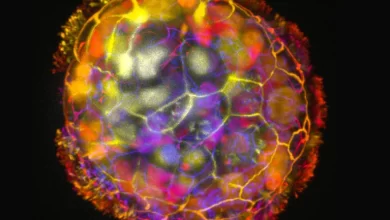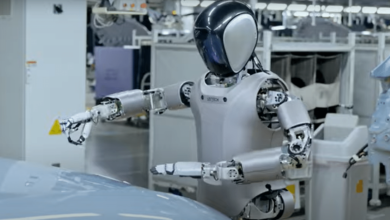Advancing piezoelectric sensors to monitor robotic movement

Flexible piezoelectric sensors are essential to monitor the motions of both humans and humanoid robots.
However, existing piezoelectric designs are either costly or have limited sensitivity.
In a recent study, researchers from Japan tackled these issues by developing a novel piezoelectric composite material made from electrospun polyvinylidene fluoride nanofibers combined with dopamine.
Sensors made from this material showed significant performance and stability improvements at a low cost, promising advancements in medicine, healthcare, and robotics.
Flexible sensors are crucial for advancing modern robotics
The world is accelerating rapidly towards the intelligent era—a stage in history marked by increased automation and interconnectivity by leveraging technologies such as artificial intelligence and robotics.
As a sometimes-overlooked foundational requirement in this transformation, sensors represent an essential interface between humans, machines, and their environment.
However, now that robots are becoming more agile and wearable electronics are no longer confined to science fiction, traditional silicon-based sensors won’t be suitable for many applications.
Therefore, flexible sensors, which provide better comfort and higher versatility, have become a very active area of study.
Piezoelectric sensors are particularly important in this regard, as they can convert mechanical stress and stretch into an electrical signal. Despite numerous promising approaches, there remains a lack of environmentally sustainable methods for mass-producing flexible, high-performance piezoelectric sensors at a low cost.
Could electrospinning address flexibility issues?
The proposed flexible sensor design involves the stepwise electrospinning of a composite 2D nanofiber membrane.
First, polyvinylidene fluoride (PVDF) nanofibers with diameters in the order of 200 nm are spun, forming a strong uniform network that acts as the base for the piezoelectric sensor. Then, ultrafine PVDF nanofibres with diameters smaller than 35 nm are spun onto the preexisting base.
These fibres become automatically interweaved between the gaps of the base network, creating a particular 2D topology.
After characterisation via experiments, simulations, and theoretical analyses, the researchers found that the resulting composite PVDF network had enhanced beta crystal orientation.
By enhancing this polar phase, which is responsible for the piezoelectric effect observed in PVDF materials, the piezoelectric performance of the sensors was significantly improved.
Testing the sensors in wearable devices
These exceptional qualities were demonstrated practically using wearable sensors to measure a wide variety of movements and actions.
Given the potential low-cost mass production of these piezoelectric sensors, combined with their use of environmentally friendly organic materials instead of harmful inorganics, this study could have important technological implications not only for health monitoring and diagnostics but also for robotics.
Professor Ick Soo Kim, who led the study, commented: “Considering high-tech sensors are currently being used to monitor robot motions, our proposed nanofiber-based superior piezoelectric sensors hold much potential not only for monitoring human movements but also in the field of humanoid robotics.”
To make the adoption of these sensors easier, the research team will be focusing on improving the material’s electrical output properties so that flexible electronic components can be driven without the need for an external power source.



